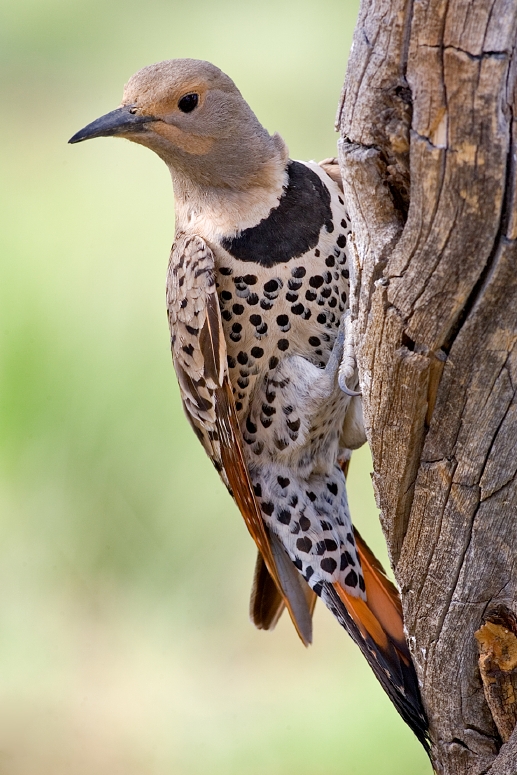Facts for Kids
The northern flicker is a medium-sized woodpecker known for its distinctive markings and habitat preferences, often foraging on the ground for insects and seeds.
Overview
Interesting Facts
Conservation Status
Breeding And Nesting
Diet And Feeding Habits
Habitat And Distribution
Physical Characteristics
Behavior And Social Structure
Vocalizations And Communication

Inside this Article
United States
Territory
Woodlands
America
Gardens
People
Spring
Season
Stripe
Did you know?
🪶 Northern flickers are a type of woodpecker found throughout North America.
🌳 They prefer open habitats with trees, often seen foraging on the ground.
🎵 They emit a distinctive 'wick-a-wick-a-wick' call, especially during the breeding season.
🦜 Flickers have a unique diet that includes a wide variety of insects and seeds.
🕊️ They are known for their striking plumage, with a black crescent on their chest and spotted belly.
🌞 Northern flickers can be found in two common color variations: the yellow-shafted and red-shafted forms.
🧪 They are one of the few woodpeckers that frequently forage on the ground rather than just on trees.
🏡 Northern flickers often use abandoned woodpecker holes or other natural cavities for nesting.
🌍 Their range extends from Canada to Mexico, adapting to a variety of environments.
🦉 Despite their woodpecker classification, flickers are often seen perching horizontally like sparrows.

